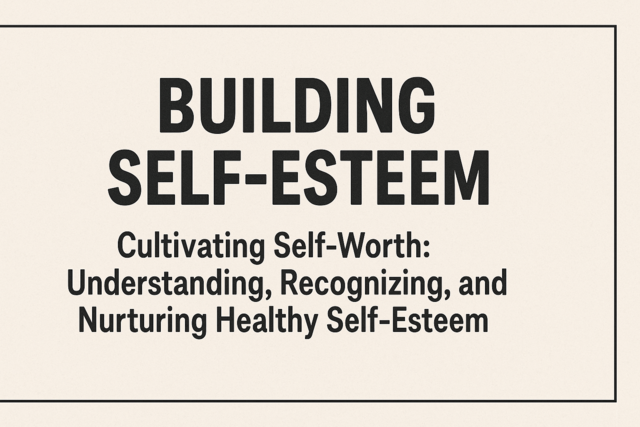Introduction
A good analogy would be learning how to drive a stick shift or manual transmission vehicle. If you have a clear understanding of the various gears, where the clutch is, and what speed you need to be at to shift up or down, you can then proceed to understanding how the car feels to you when it is at the correct speed for you to shift up or down. This article will provide an excellent foundation of understanding for future reference as you begin to use the assertiveness skills you will learn later on in this article.
There will be times, as you practice being more assertive, that you will be unsure whether you have struck the right balance in expressing your needs and wants to others or if you have been too passive or too aggressive. In that regard, this is the most important article of the unit because it will be your point of reference in achieving balance.
Merriam-Webster Online defines assertiveness as follows:
1: disposed to or characterized by bold or confident statements and behavior.[i]
Some synonyms of "assertive" include self-confident, self-assured, confident, firm, forceful, emphatic, positive, and decided.
That is the basic definition of assertive, pure and simple. Being assertive means a person is disposed toward expressing and displaying bold or confident statements and behavior, which means the individual is confident.
So, if assertiveness depends largely on one's level of confidence, what does being confident mean?
1: full of conviction, certain, confident of success;
2: having or showing assurance and self-reliance.
We do not live in a vacuum. It would be nice, sometimes, if we could hide out and get what we want and need without involving other people. The thought of this is comical, though, because our very existence as social beings requires that we interact with others. To be happy and fulfilled, we must ask for what we need. Later on in this article, you will learn how to build confidence, how to clarify and determine exactly what you want from life, and learn how to get those things with the cooperation of others.
These people serve only to lower your self-confidence and self-worth. We refer to these people as "bottomless pits." They will take more and more, never recognize or reward your best efforts, and give you little or nothing back. In those situations, it is better to acknowledge the truth and find balanced relationships of give and take that boost your self-confidence. You will learn more about how to recognize "bottomless pits" and what to do about them later on in this article. For now, just be aware that these people exist and they should not be confused with those who want to but are unable to meet your needs because of circumstances.
Why Is Being Assertive So Difficult for So Many People?
There are many answers to this question, but the most common are:
- Insecurity: You lack an accurate, healthy appreciation for your own talents, abilities, and self-worth.
- Fear: You worry that you will not get what you want, that you will lose something you need or already have, or that you will be rejected.
- Shyness: You are unable to speak up or communicate because your personality is one of quiet reflector, or you are more of a laid back person.
- A desire to fit in with peers: Social pecking orders and group pressure do a lot to keep people "in their place." Everyone knows someone who has been ostracized from a group for disagreeing with the status quo or expressing a desire to have personal needs met if those needs conflict with the needs of those higher up in the hierarchy. The more dysfunctional the group, the more oppressed the individual becomes.
- Lack of self-direction: You do not know what to ask for because you do not really know what you want.
- Lack of knowledge: Knowledge is power. If you are ignorant of what you are capable of having and do not take the time to do your research or prepare well, you have nothing to back up your desires with.
- Inability to negotiate well: You do not know how to communicate the reasons why others should meet your needs and how they would benefit from doing so.
How Does Assertiveness Differ from Passiveness and Aggression?
From the time we are very young, we begin to assert ourselves. Listen to any toddler closely and you will hear the word "no" uttered often. You will also hear the same word, equally as often, coming from the parents of that toddler.
Here is an example of that type of dueling assertiveness: Little Jimmy is presented with a large helping of strained peas for lunch; he shouts "No!" and lifts the bowl to dump the peas on his head. His mother's eyes open wide in dismay, and she responds with a "No!" of her own. If Jimmy were a little older, he would understand how to better communicate his hatred of peas and negotiate some tasty strained peaches from his mother instead by explaining that peaches are just as healthy as peas and taste better, too.
Even at this early stage of life, Jimmy is learning a lesson about asserting himself. His mother, depending upon her reaction, is teaching him a particular lesson about what happens when he asserts himself, depending on her response. Let us not analyze the situation too much, or the parent-child relationship. Let us just use it for a point of learning reference. Like any new venture, starting the process of being assertive begins with baby steps. So, let us use the Little Jimmy example to compare assertiveness, passiveness, and aggression.
We will assume that Jimmy's mother is out of everything but strained peas. She has no choice but to feed him his least favorite meal, so she proceeds to spoon-feed him the peas, cajoling, cooing, and attempting all forms of persuasion to get him to eat them:
- If Jimmy eats his peas without a fuss, maybe even gags a little with each bite because he hates them so much but finishes them without protest, he is being passive.
- If Jimmy grabs the bowl from his mother's hand and throws it at her, making a mess all over her, the floor, and the walls, thereby upsetting her, he is being aggressive.
- If Jimmy takes a few bites, remembers why he hates the peas so much, and clamps his mouth shut, refusing to take one more bite, he is being assertive.
It really is that simple.
Passive people eat the hated peas and do what others want them to do to earn their approval without question, whether they like it or not.
Aggressive people overreact, making a mess and angering people to the point that no one wants to give them anything, or people give them what they want out of fear instead of cooperation.
Assertive people know what they want and do not want, make those desires clear, and refuse to budge unless a reasonable explanation or alternative is offered from the other person.
Later on we will cover avoiding another behavior, passive aggression, in more detail; but it is important to understand what that behavior is as well. It is used by many people who do not know how to get what they want from others in a direct manner. It is not healthy and does not help develop happy, trusting relationships with others.
Passive aggression is when people use covert, sneaky, and indirect methods of being aggressive. They do this because they cannot express anger or be direct about their real emotions, wants, or needs. Often, passive aggressive behavior becomes a response to dealing with another passive aggressive person or from continually not getting what one wants and needs from another regularly. Fear is at the root of passive aggressive behavior: fear of being rejected or having to deal with another's anger, or fear of the consequences that will result if they assertively ask for what they need. The fear of asking for what they want, expressing their true emotions, or admitting they need the other person is very profound. Passive aggression is used often to retaliate against others for real or perceived slights by using or displaying some of following behaviors:[ii]
- Forgetfulness: I forgot your birthday, or I forgot to finish my assignment, call the client, take out the garbage, call you, etc.
- Blaming: It is not my fault I am late; it is the traffic every night. It is not my fault I get fired every few months; all my bosses are unreasonable. I have no faults; nothing is my fault.
- Lack of anger: While never or rarely showing anger externally or directly, passive aggressive people retaliate in an underhanded way.
- Obstructionism: This behavior involves never really giving others what they want or need; in fact, going out of the way to deny others what they want, while pretending all the while to have intentions of fulfilling those wants and needs.
What Does Assertive Behavior Look and Feel Like?
Since Little Jimmy was such a good example of simple assertiveness, let us use him again to get a handle on what assertiveness looks and feels like. Taking the stance of firm refusal to accept what he does not want, peas, it appears externally that Jimmy is being confident and self-assured. To people who may be controlling or inflexible themselves, it may appear that he is being stubborn, willful, or bratty. Wrong! He was clearly asserting himself and not being defiant. Throwing the peas? That is another story.





























